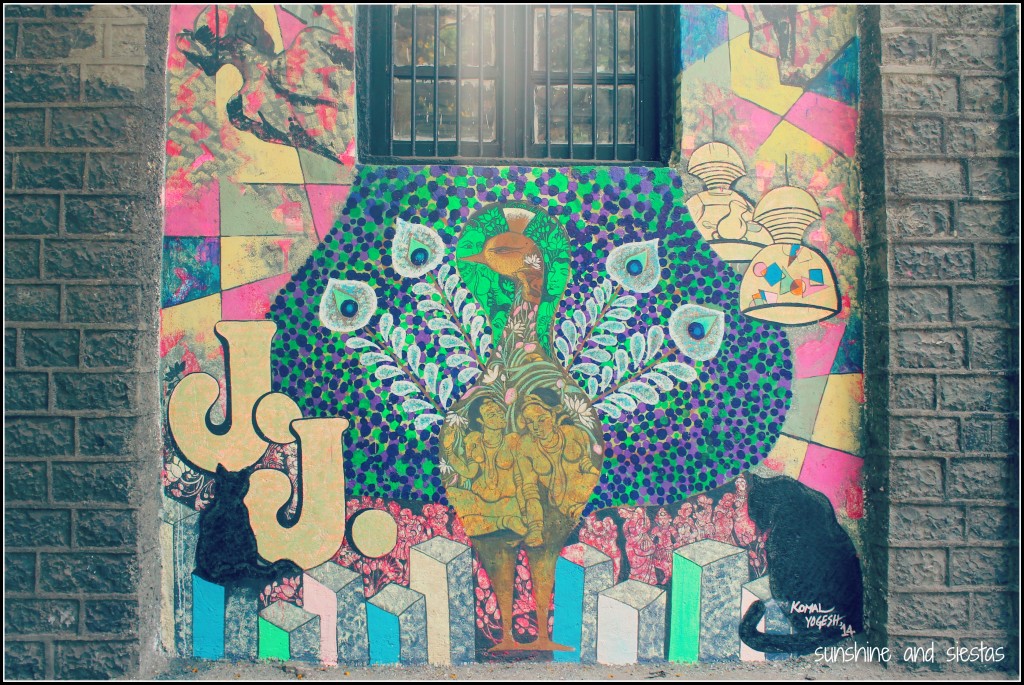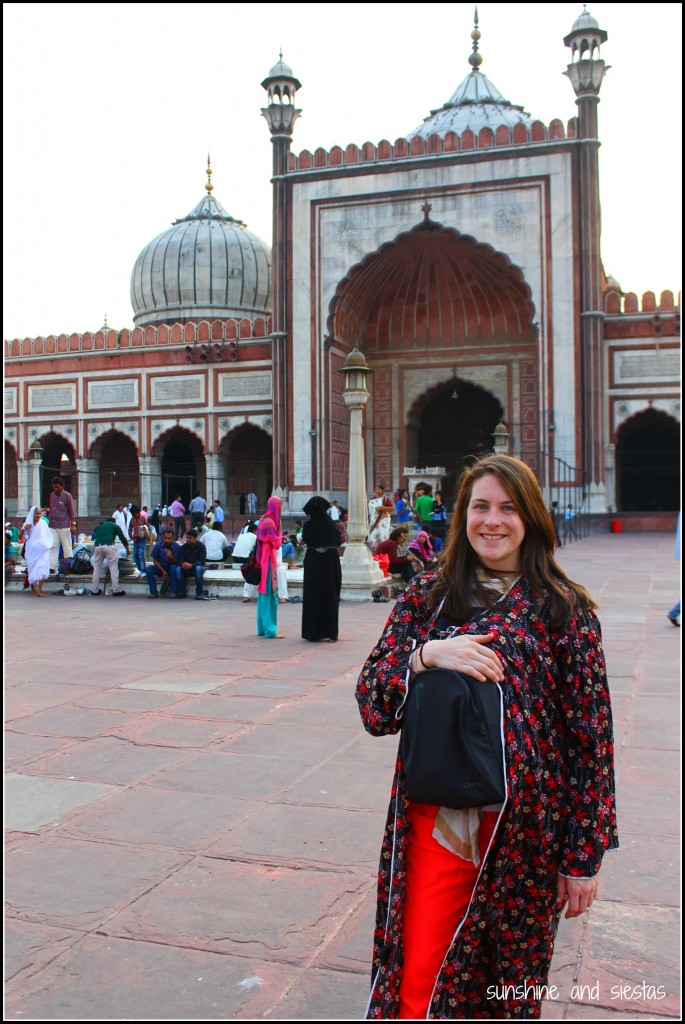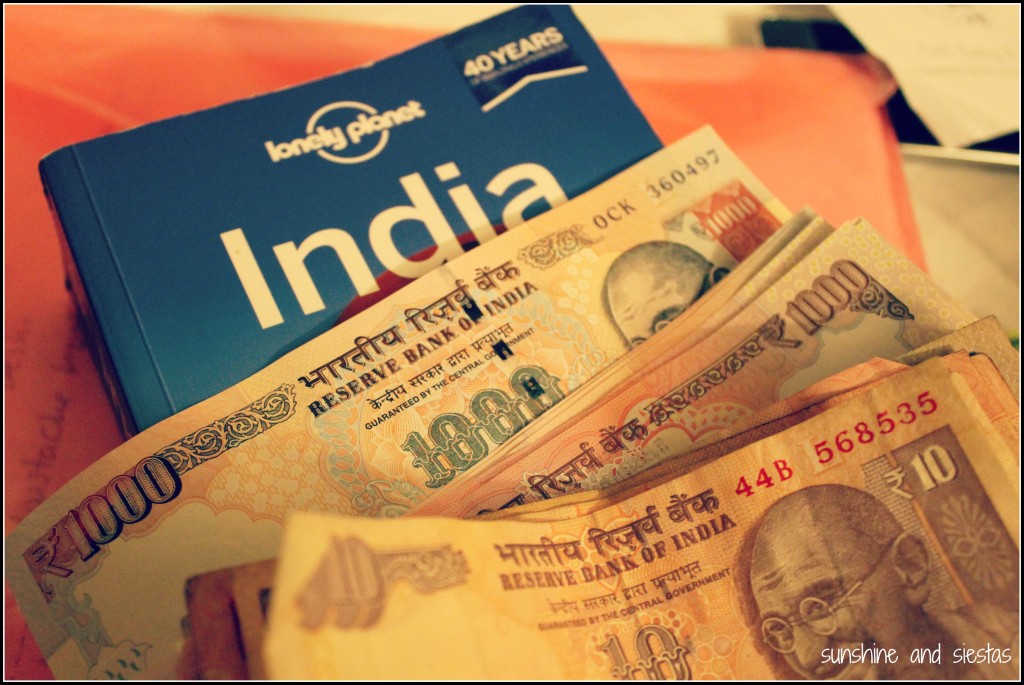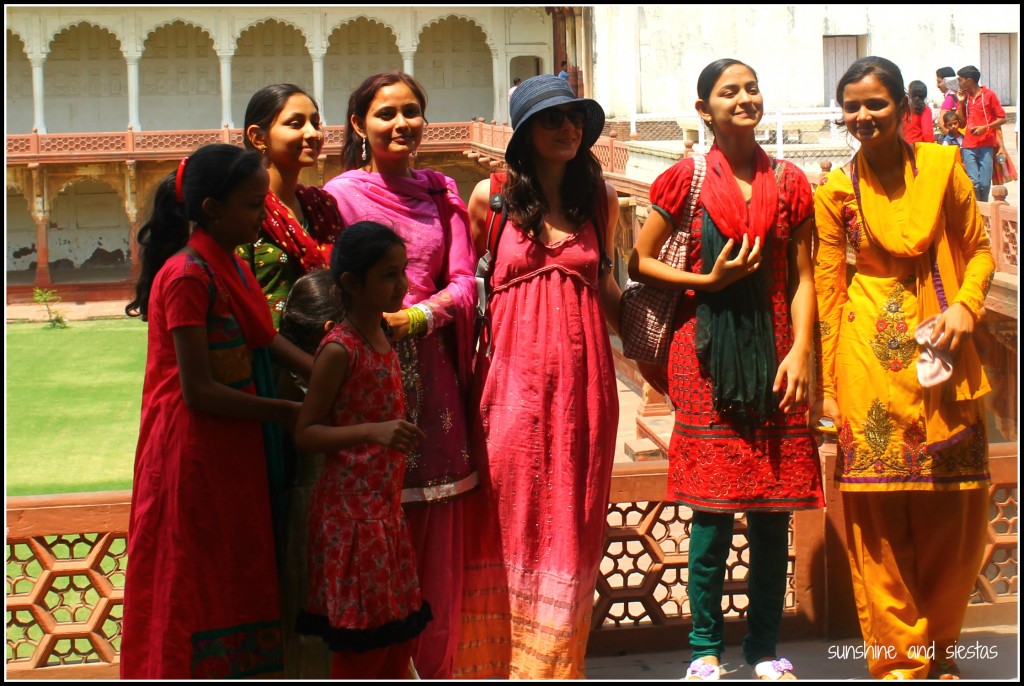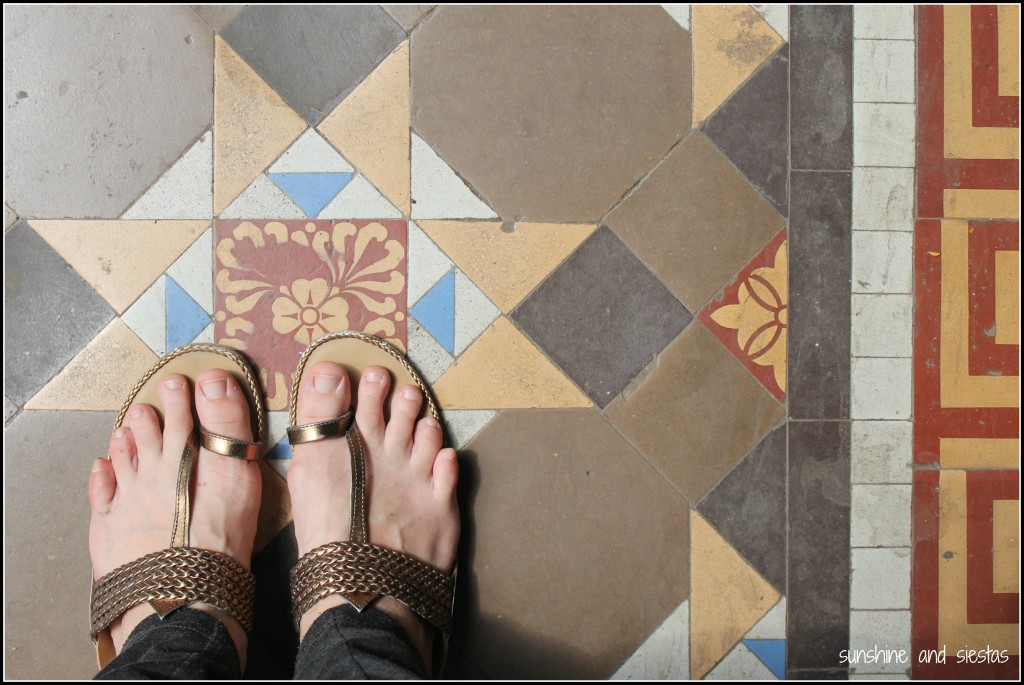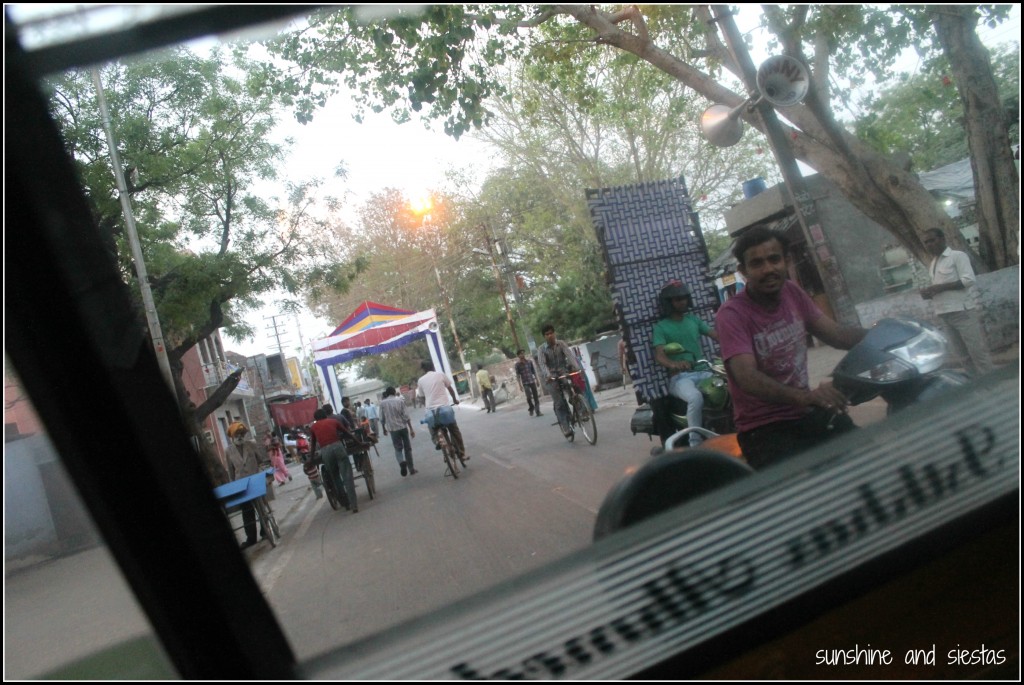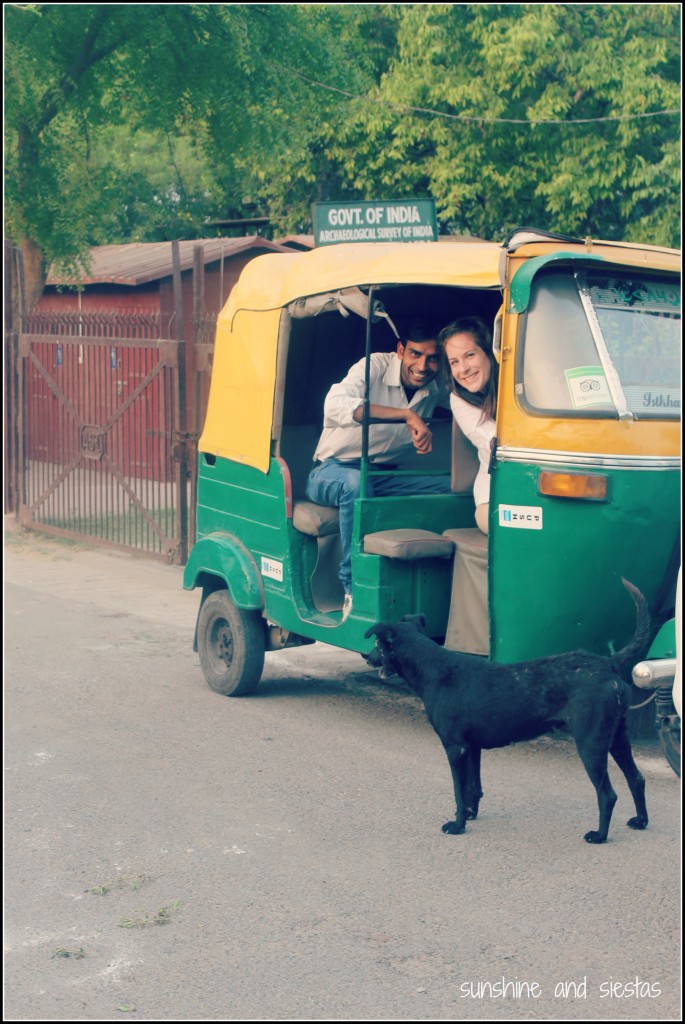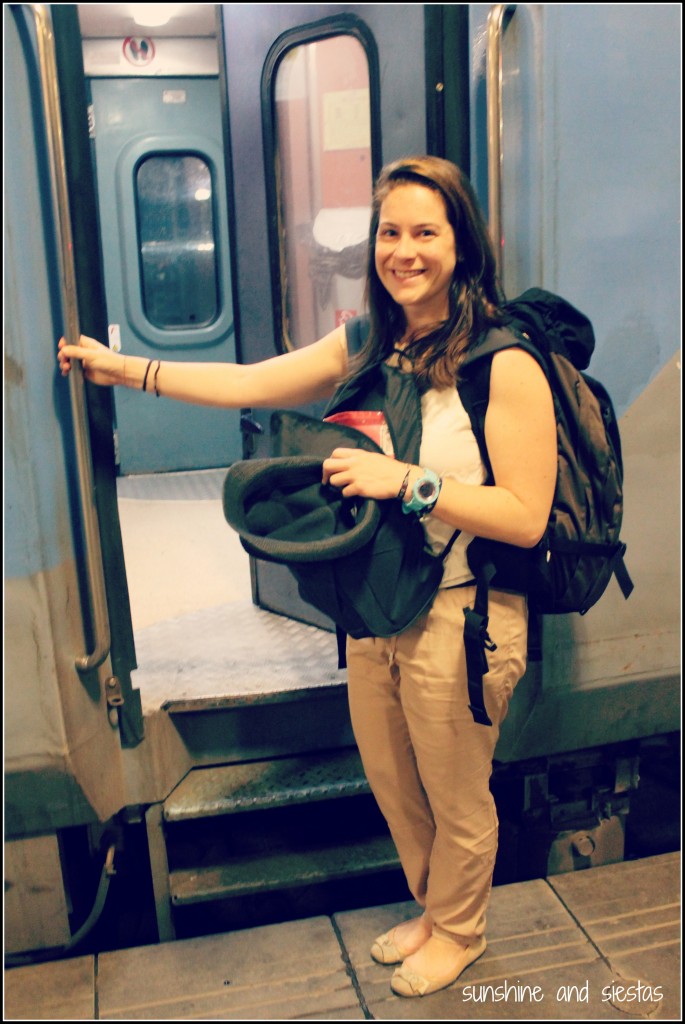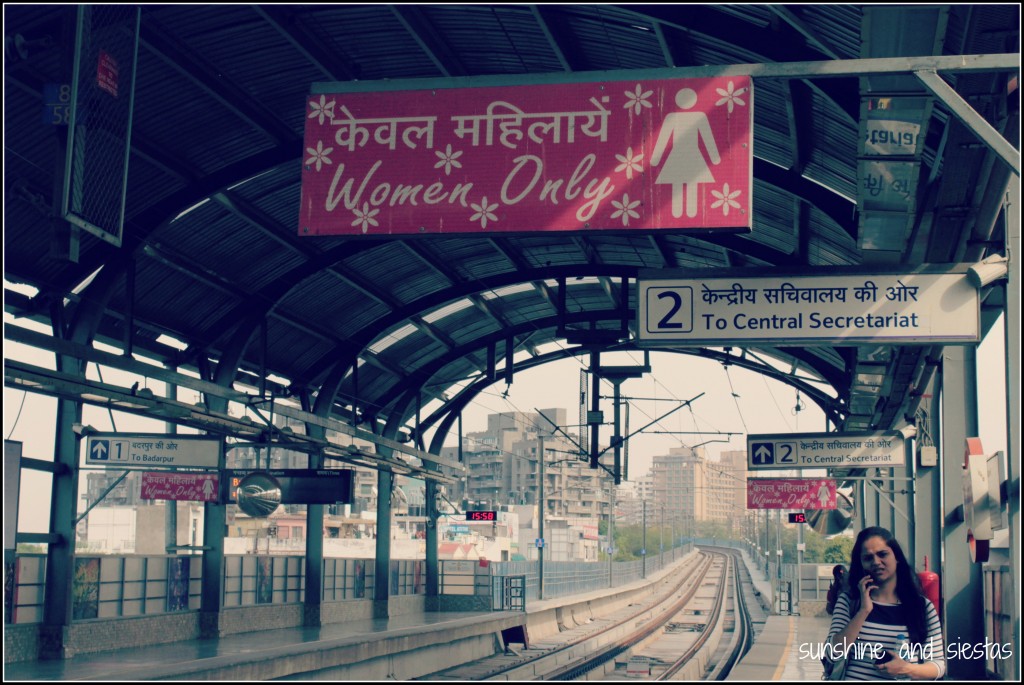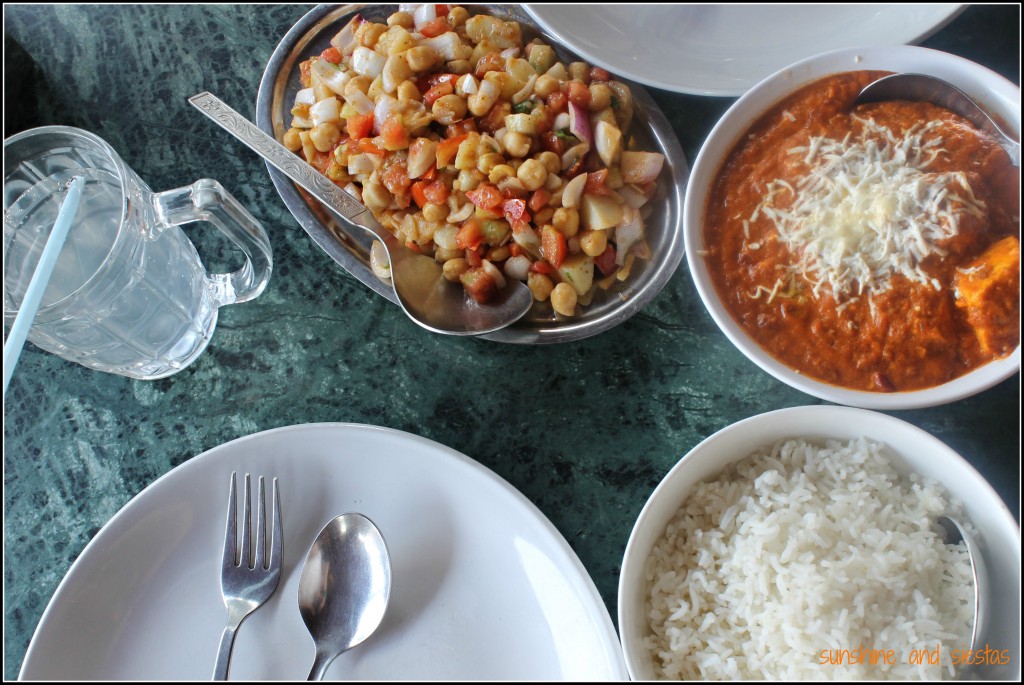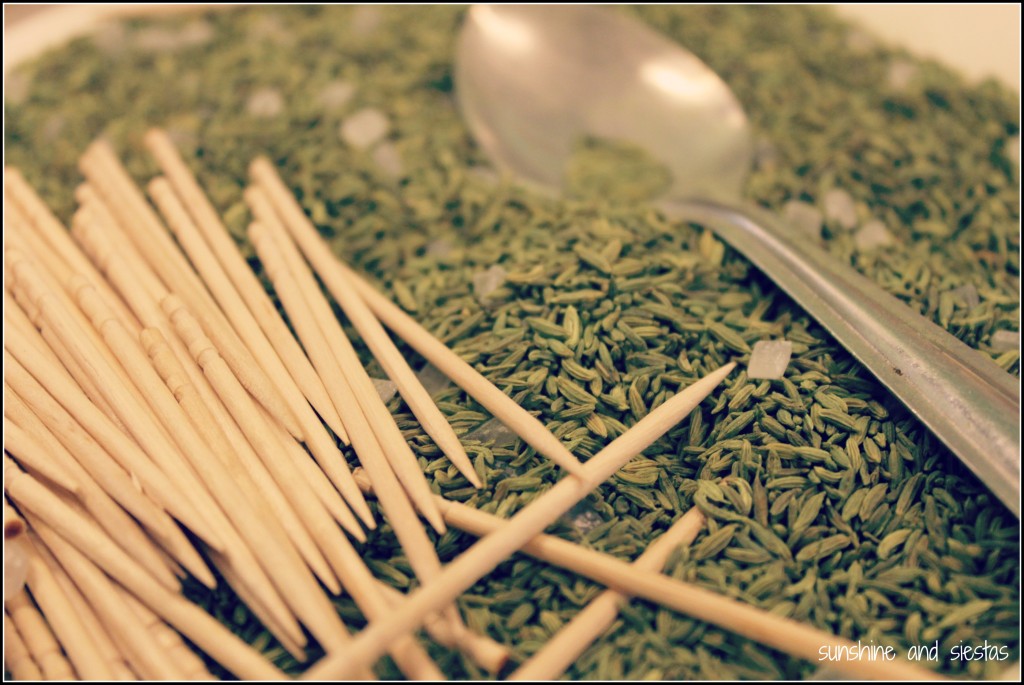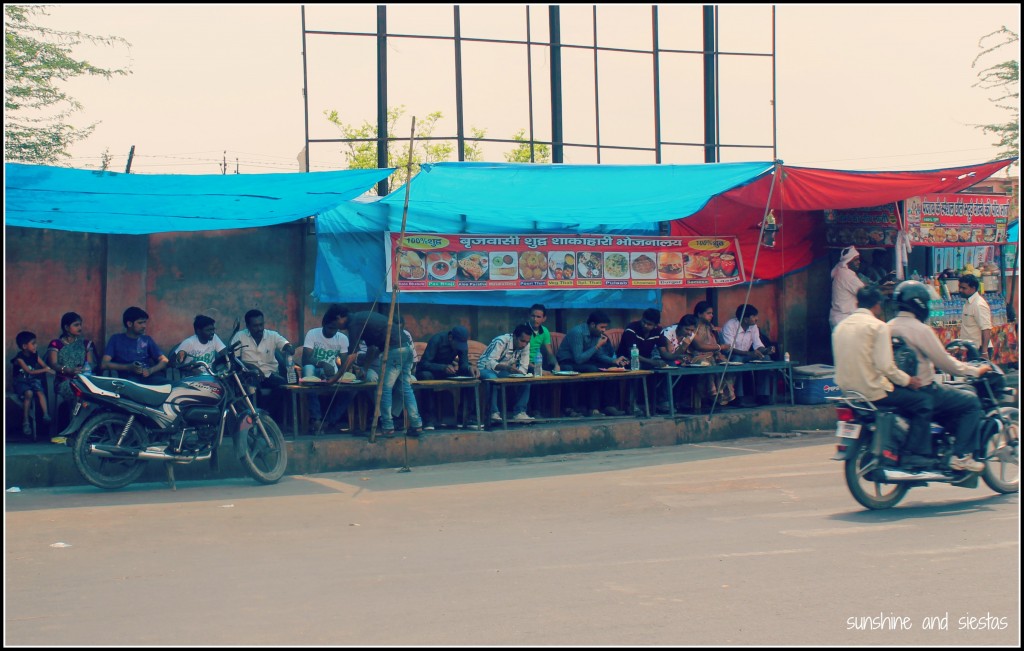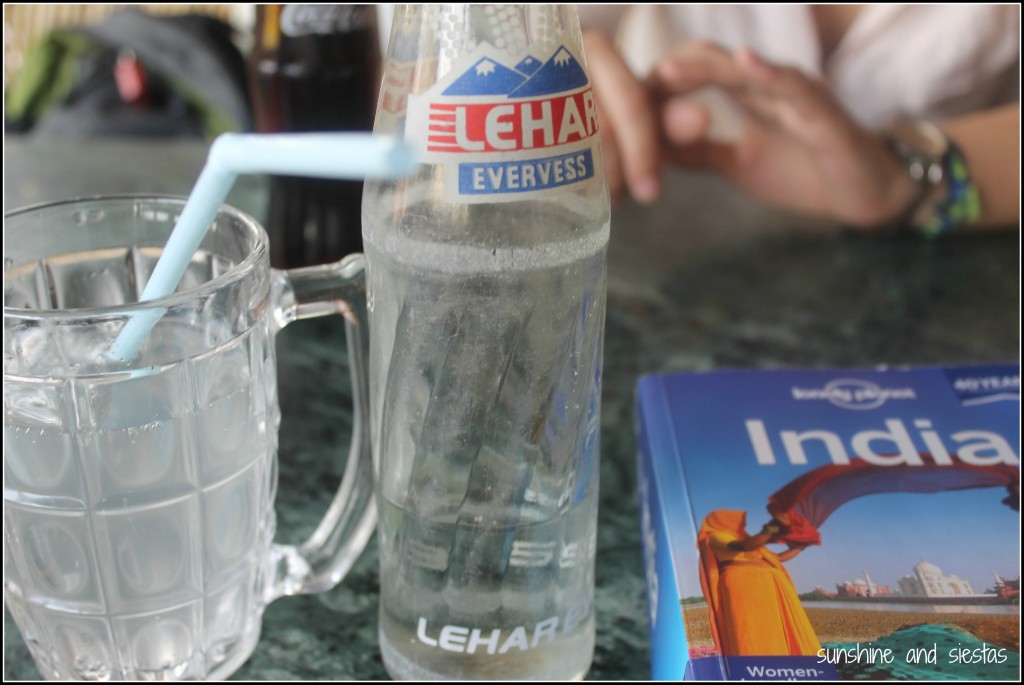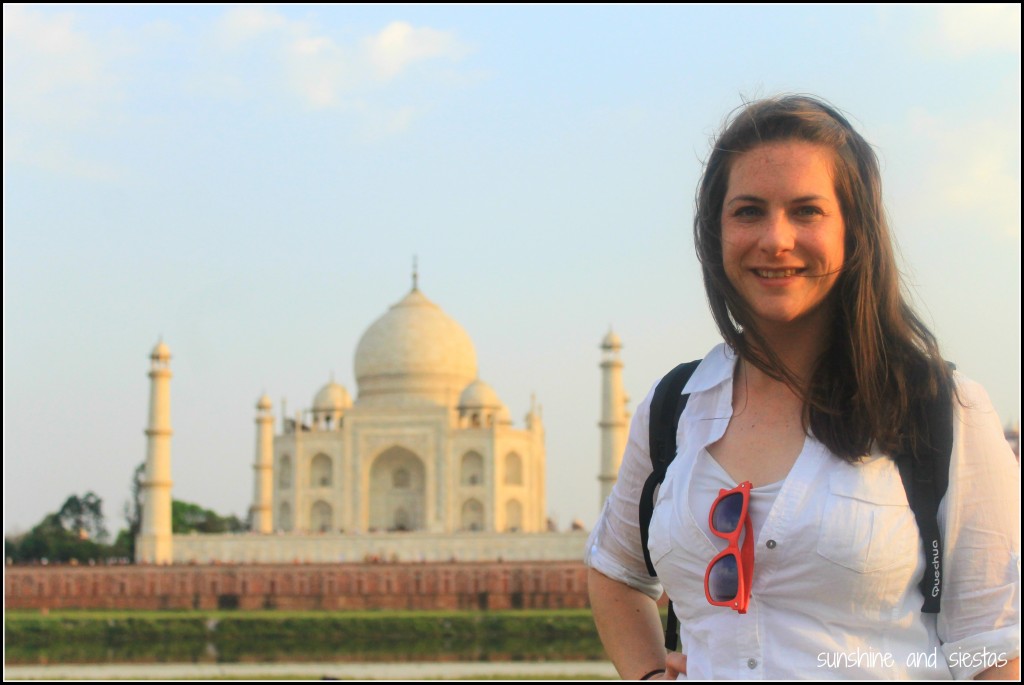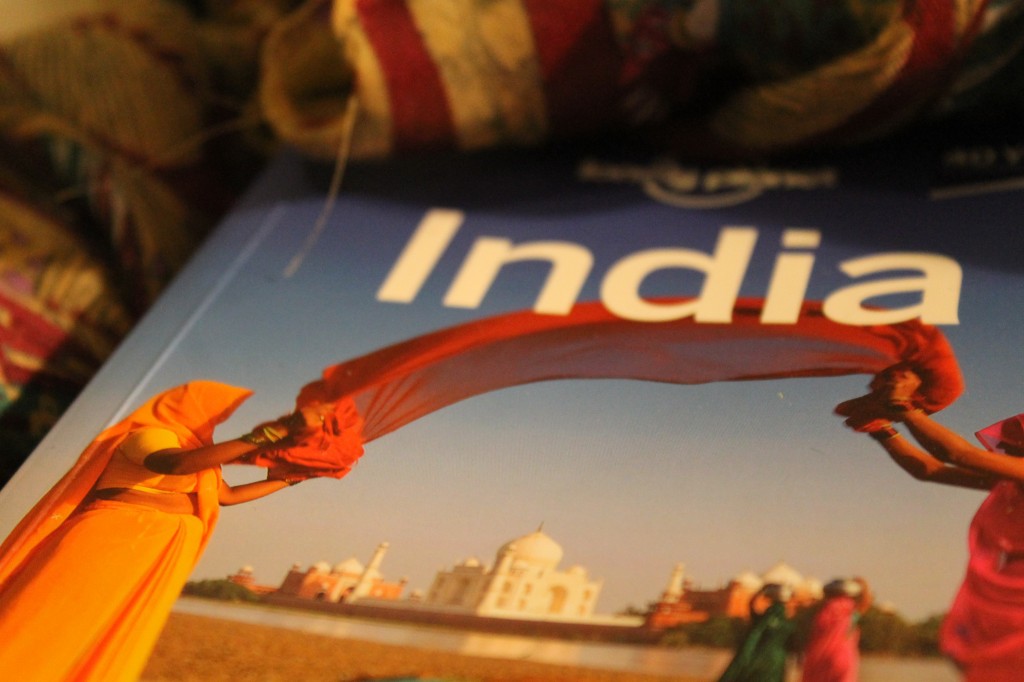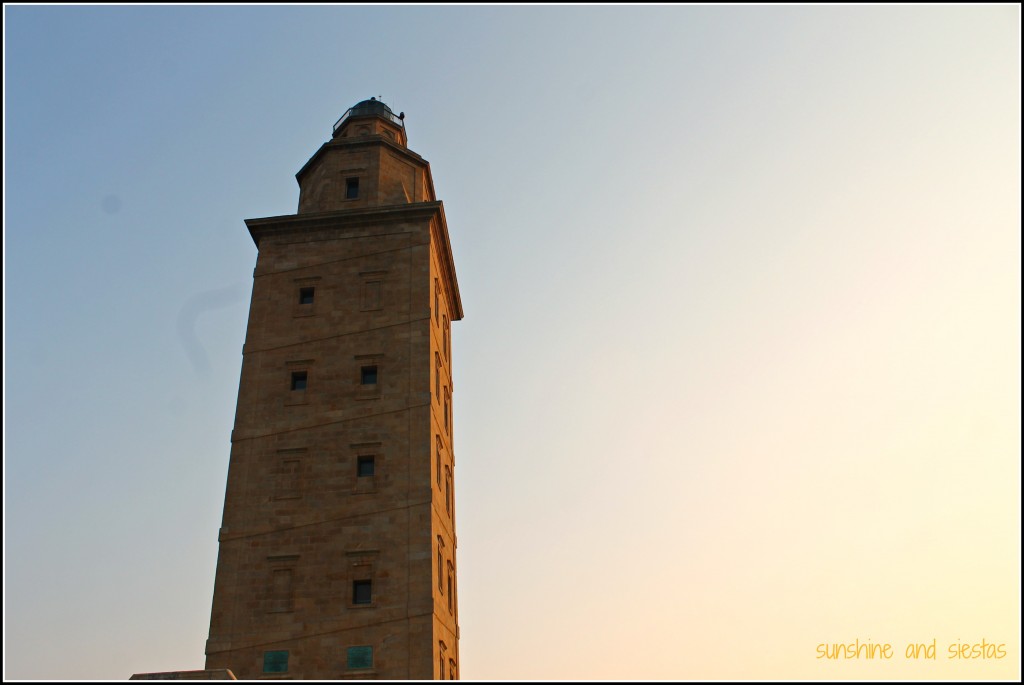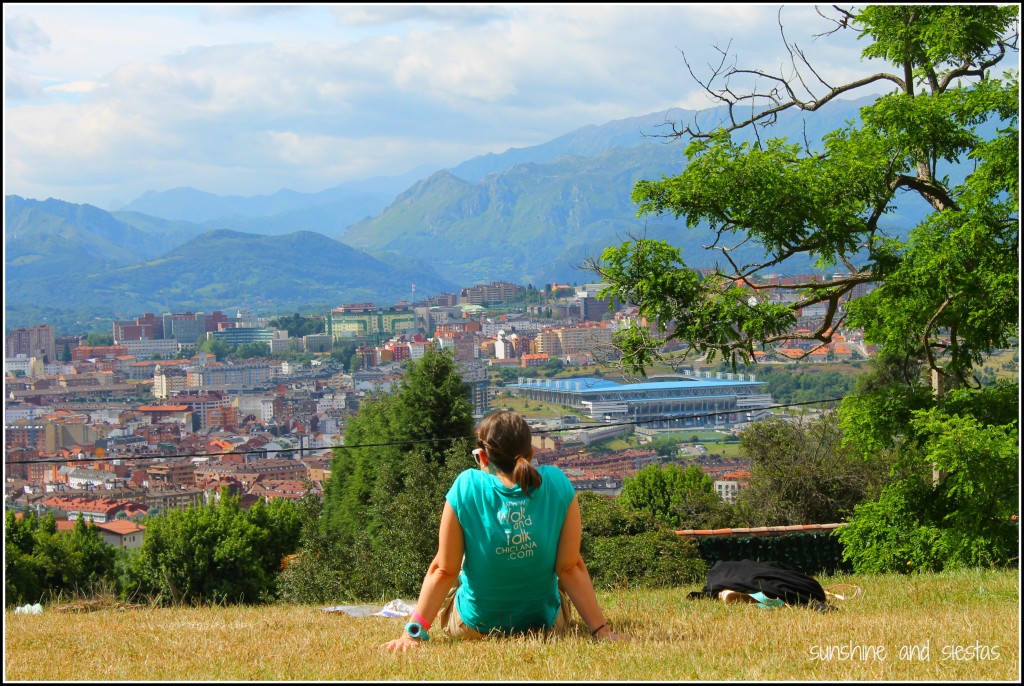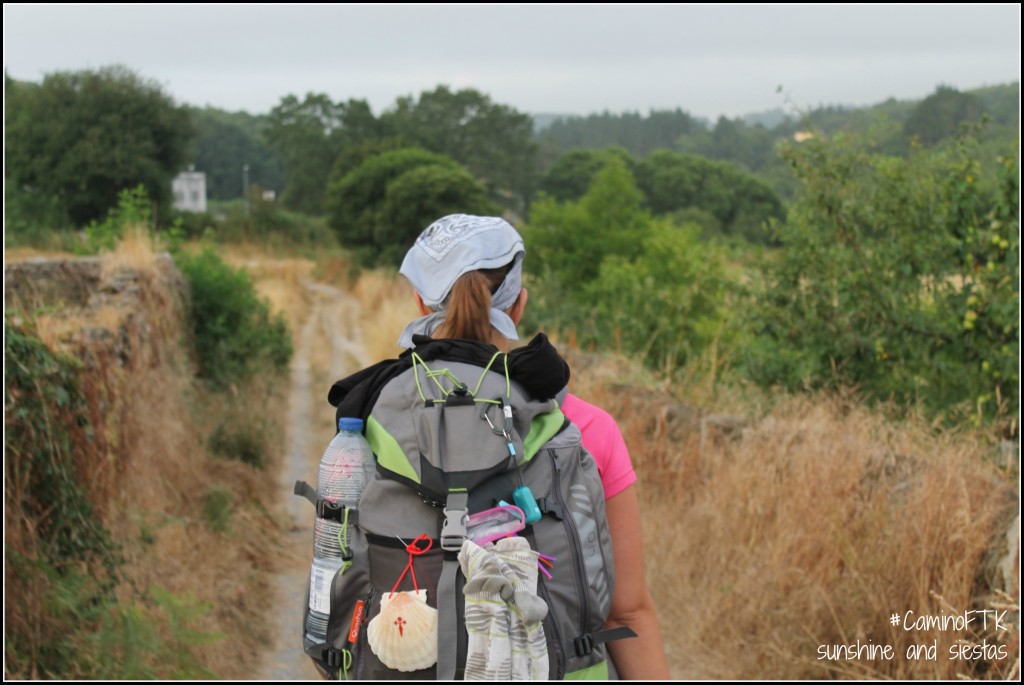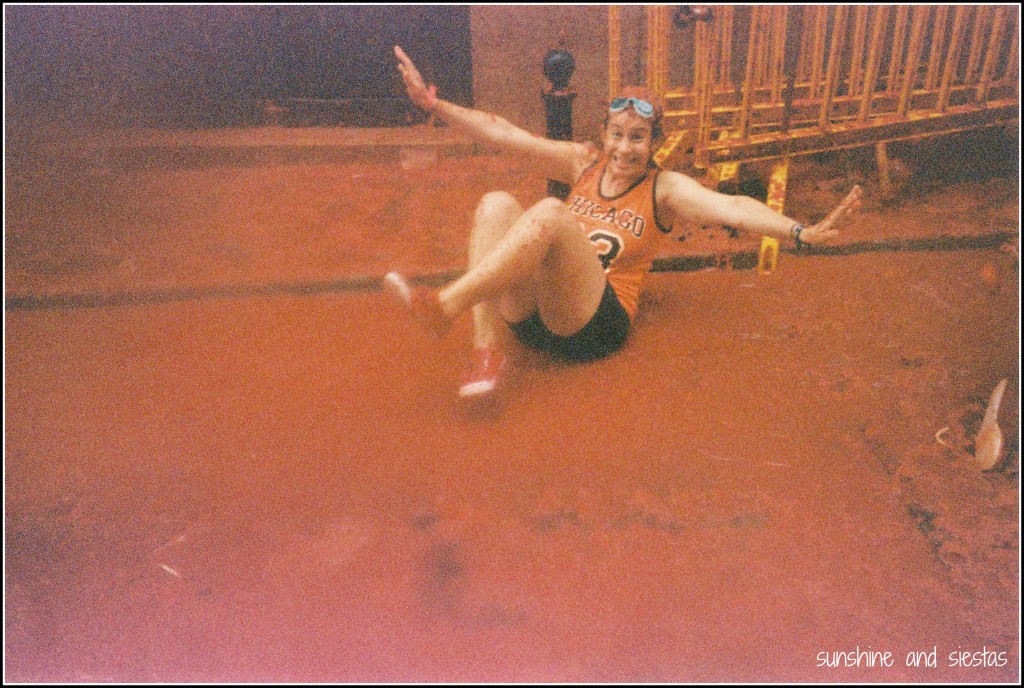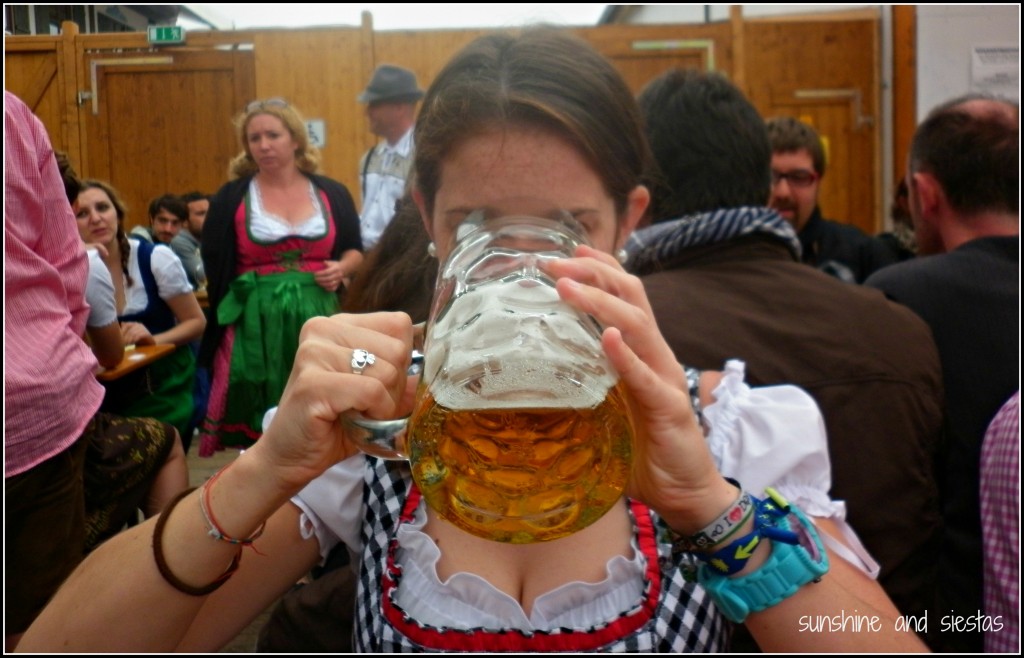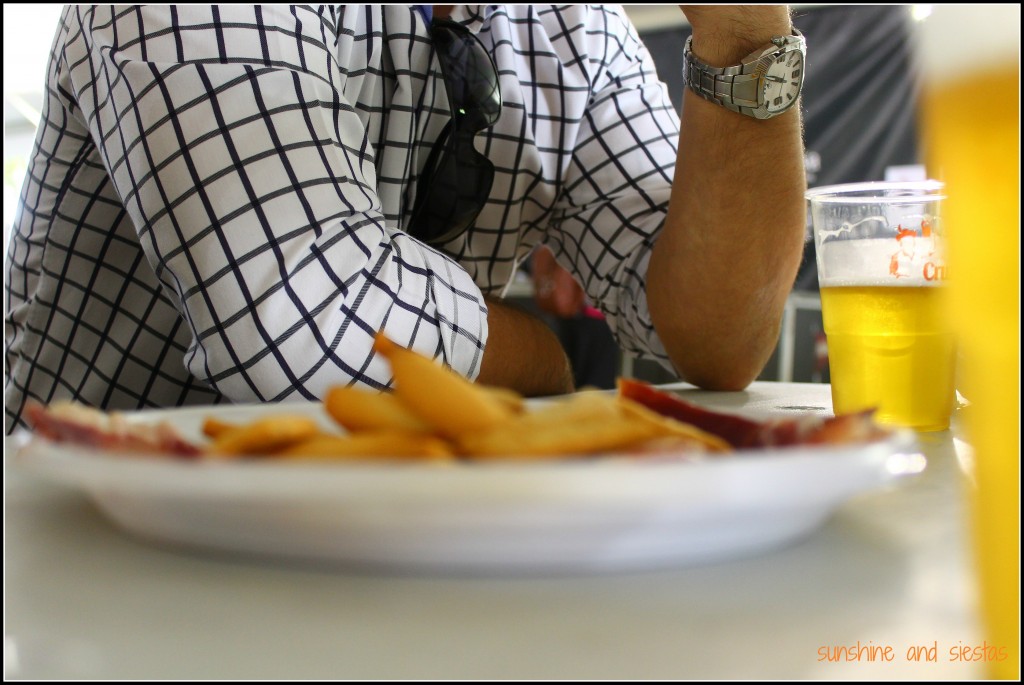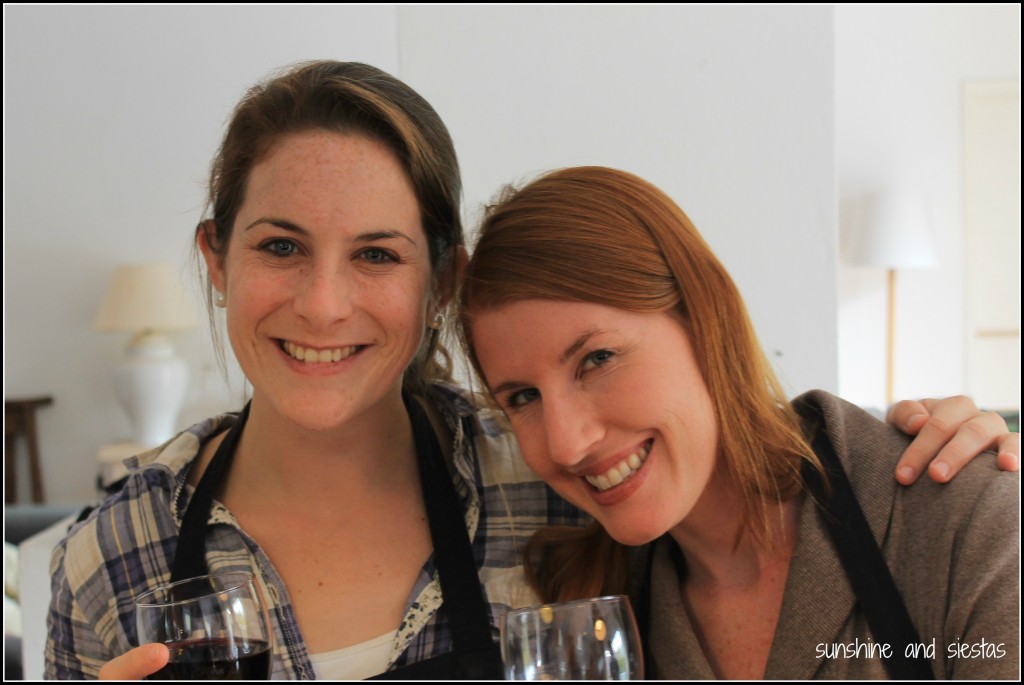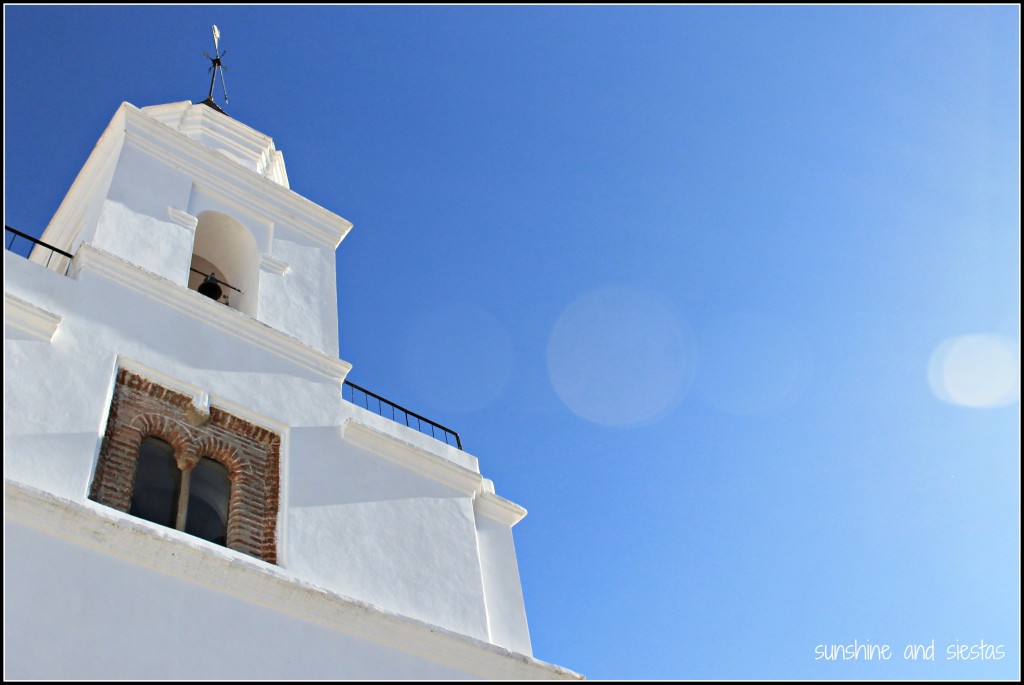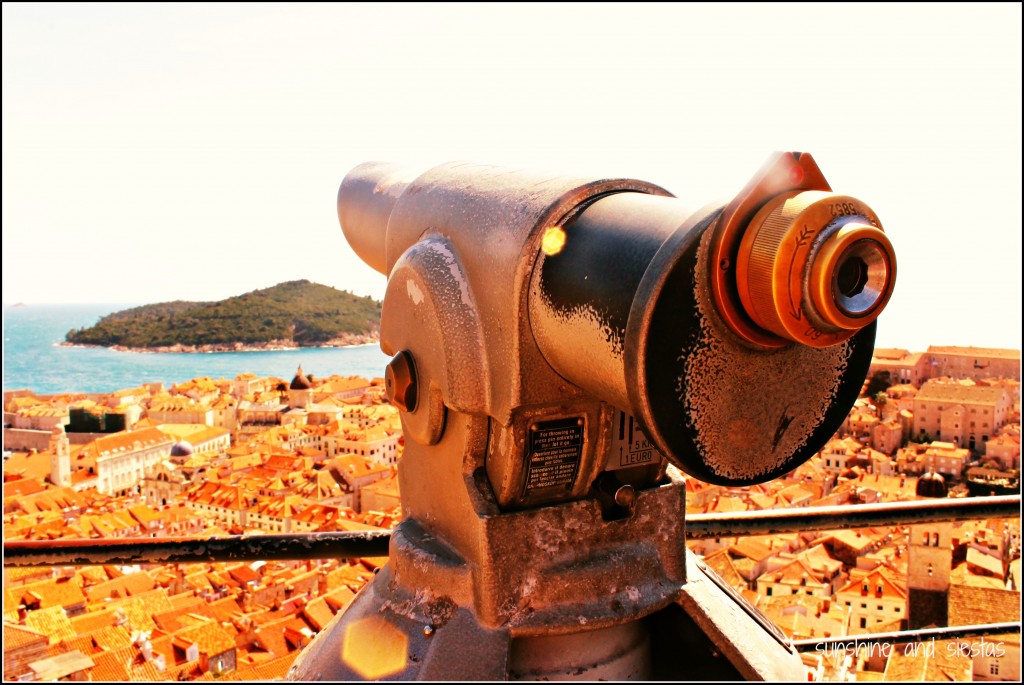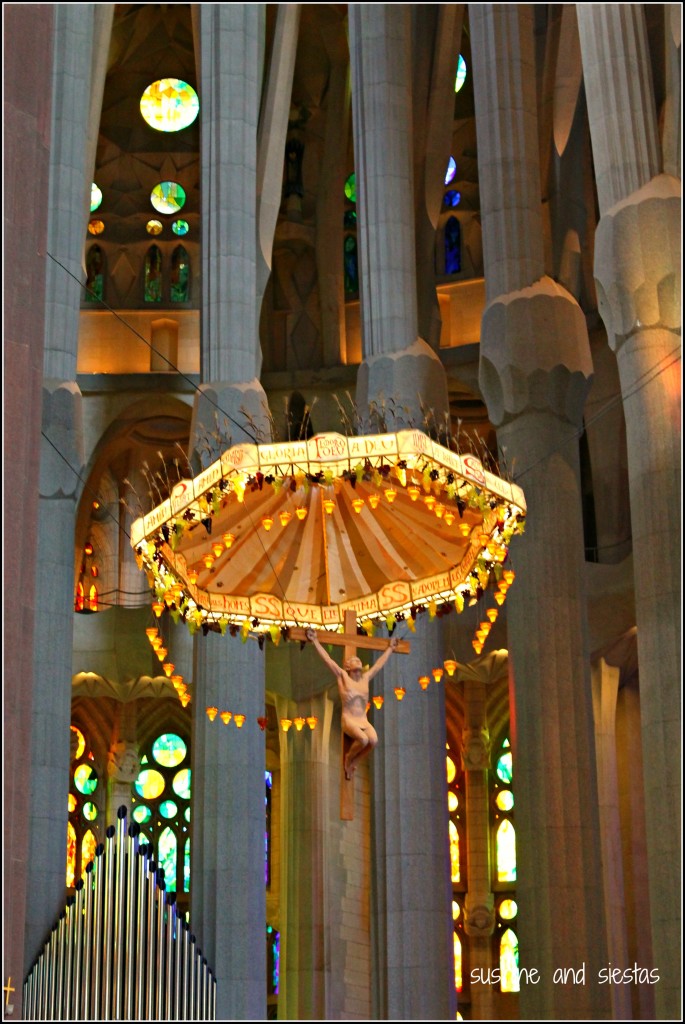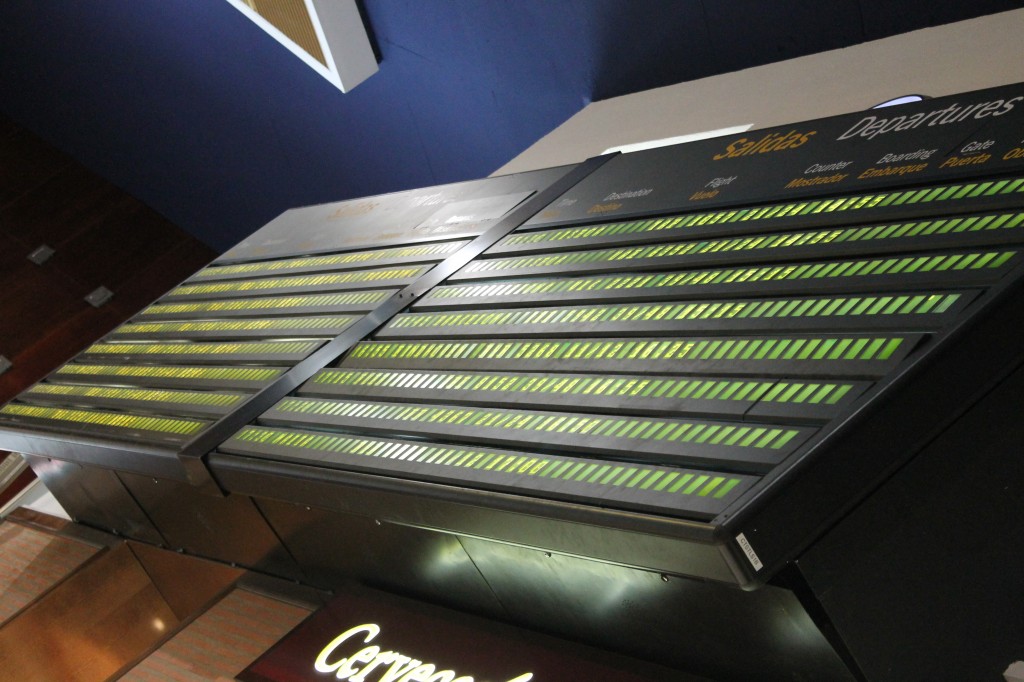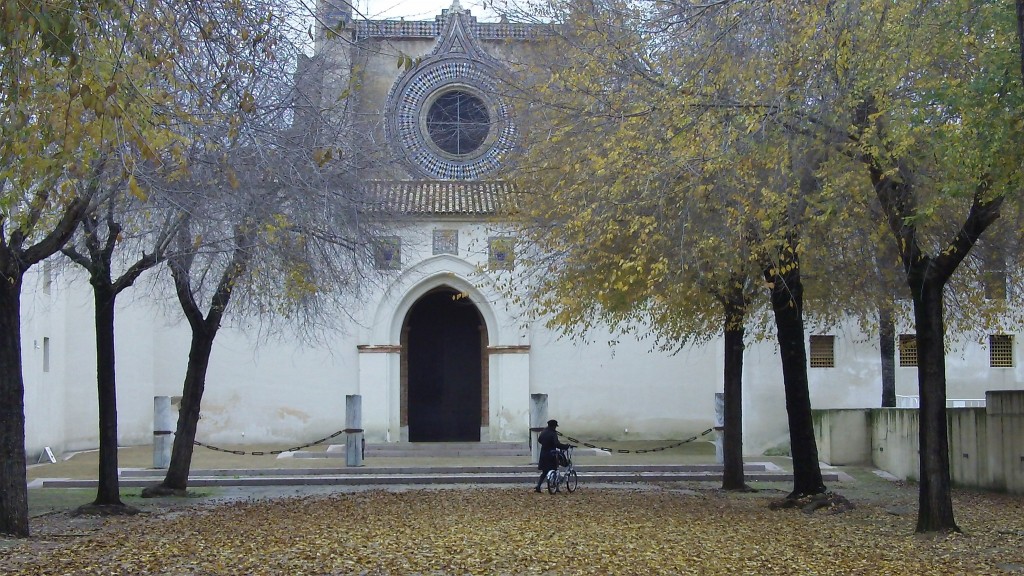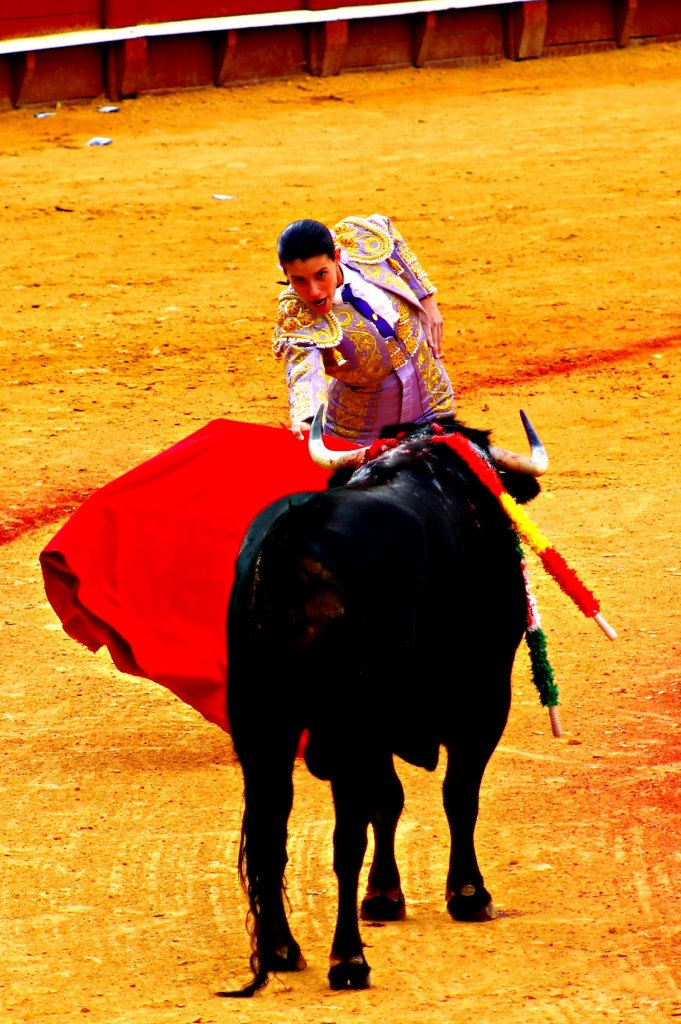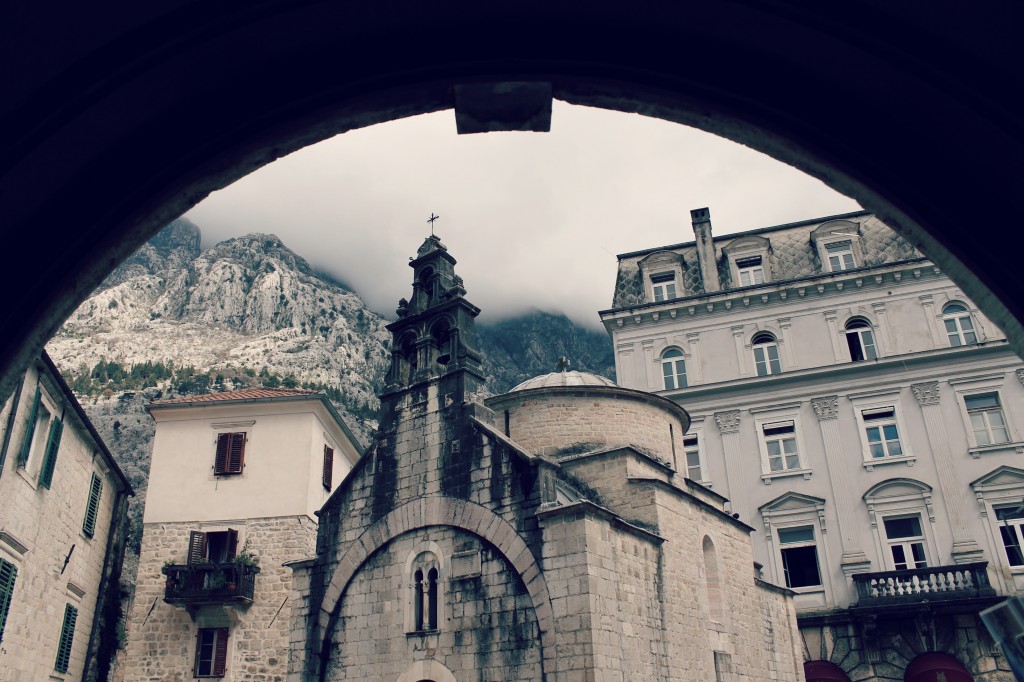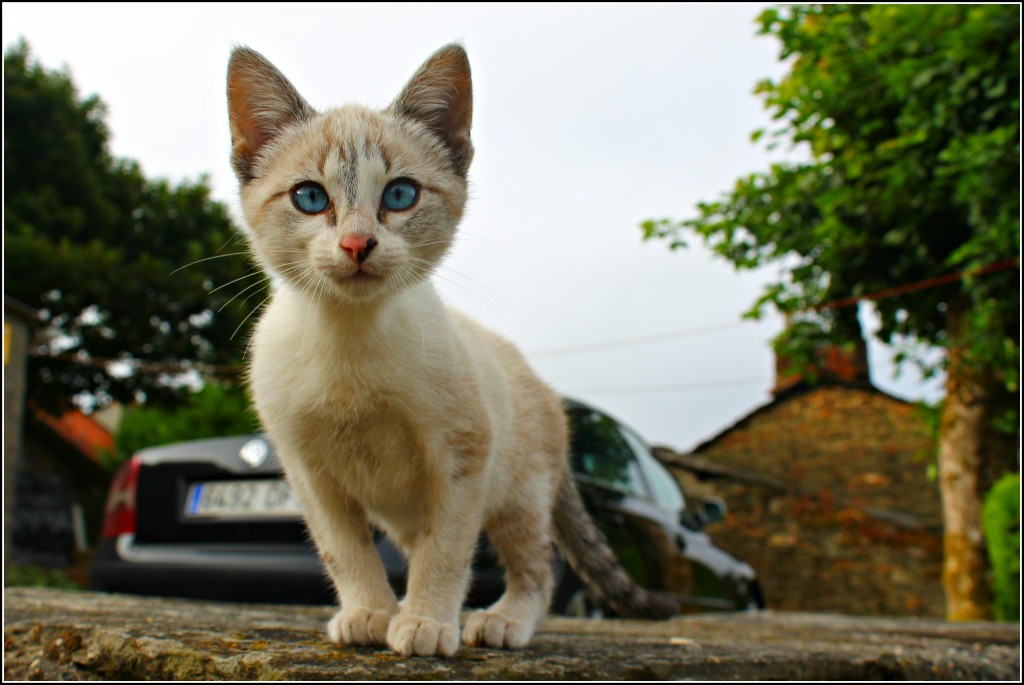There is no way to prepare yourself for India. Not by reading books or watching Monsoon Wedding or scouring the latest edition of Lonely Planet.
Nothing can prepare you for the heat. The crush of bodies. The smells (both good and bad). The menagerie of animals eating trash on the street. The traffic. True to every single thing I heard about it, India was an assault on the senses.
I woke up groggy every morning from listening to the cacophony of tuk tuk horns that had my ears ringing all night. Every meal seemed to taste better than the last. I was humbled by the simplistic nature of the barefoot kids who were happy in their ambivalence. I have a newfound love for Bollywood tunes, marigolds and milky chai tea.
India got under my skin in a way that only Spain has.
But India comes with a learning curve as steep as they come. After more than 24 hours of travel from Seville to Delhi, and countless more hours awake, Hayley and I were burped out into a muggy, overcrowded city, which was beyond foreign. And our room wasn’t ready either, so we gingerly ventured into the mess of streets in the Kailash Colony area of South Delhi, only to get lost, whine at one another and take a tuk tuk to the closest thing on our map, the Lotus Temple.
After a nap and shower (and a fresh change of clothes), we wanted to see the Jawa Masjid temple in Old Delhi, in the shadow of the overpowering Red Fort. We took the metro to the wrong stop, couldn’t fend off the dozen tuk tuk and rickshaw drivers who tried to pick us up. We walked through a part of town where it seemed that tourists were anywhere but, finally using the call to prayer to direct us to the beet-colored Muslim mosque.
We had a disastrous first meal in India at the celebrated Karim’s (WHY would we order mutton? We must have been that jet lagged…), and then after having women ask to take pictures with us Hayley the streets and dodging every sort of traffic imaginable, including pushcarts, cows and people crawling, we treated ourselves to frozen yoghurt and a sleep not punctuated by anything else but blackness.
As we crawled into the tuk tuk the next morning, I was not excited. In fact, I was ready enough to leave India without seeing the Taj or eating aloo gobi or giving it a second chance. I kept my feelings silent to Hayley for the entire day, realizing that this was her dream, too, and that the only way to make up for the previous day was by opening my mind and heart back up to incredible India.
We soon found that adapting to locals’s customs was the only surefire thing we could do to not stick out as a gora as much as we already did. We watched, and we repeated.
Customs and Religion
India is full of idiosyncracies, especially across regions. In such a large country, each part of the patchwork is just a little different from the rest. I maintain that just walking across the street, one can see everything and nothing, an array of headgear, mustaches, body types, sari styles, skin tones and accents. It’s not called a sub-continent for nothing!
The head bobble: Ah, the Indian head wiggle. While in Delhi, Hayley and I didn’t see much of the ever-famous head movement that is used to communicate both yes and maybe.
But when we got to our hotel in Jaipur, run by a family from Kerala, we were taken aback but the range of motion used when communicating a simple yes or no. It took us a few days to perfect, but on our last day, we had a conversation with a five-year-old girl from Pune, in English, who mostly answered by wiggling her head. Learn it and love it.
Clothing: Other travelers suggested buying a salwar kameez, the long tunic worn over loose-fitting bloomers, and not bringing sandals, but sturdy sneakers. I figured we’d buy something in India, but those salwar blouses looked far too hot for the 90° and humidity.
We did stick to modest clothing, but in urban centers like Delhi and Mumbai, we saw younger women sporting everything from dresses to leggings to saris. Dress modestly at all times, but wear what’s comfortable and breathable. Just like the Camino, we brought clothes that would dry easily and a bar of laundry soap. I caved and bought sandals, as well – my feet couldn’t take it!
Men holding hands: In Spain, many female teenagers hold hands with one another. In India, it was mostly grown men. We observed, and we did, but only for fun and because we love each another.
Bartering: It’s common knowledge that there’s an added gora tax in India – if you’re a Westerner, you’ll have a more inflated price than an Indian. This was evident in none other than the Taj Mahal, where we paid ten times as much to see the world’s most beautiful building (and elbow people out of our pictures).
Bartering is quite common in India, for everything from taxis to clothing. We couldn’t really watch locals haggle, but we’d watch them walk away, only to have the salesman follow and seemingly offer a better bargain. I personally like Hayley’s take on bartering: only offering the price she was willing to pay, and repeating that figure over and over!
Touching Feet: One morning, we found ourselves at the Agra train depot on our way to Jaipur. Our train had not only moved tracks, but had also been delayed several hours. As we staved off sleep and tried to take in everything around us, a crawling man approached us and touched our feet as we watched, bewildered.
As it turns out, touching feet is a sign of respect called pranama, and it is usually performed by children to elders, or by women to their husbands. After leaving us (and asking for money), he did the same to other travelers, who shooed him away.
Travel
No getting around it – there are 1.2 billion people or so in India, and they’re mostly crammed into its major cities. The sheer amount of bodies and cars and rickshaws and random cows on the street are enough to make you considering a private driver (we did in Agra and Jaipur).
Crossing the street: As Todd from the hilarious show Outsourced quips, crossing the street in India is like a real-life game of Frogger with people. When we’d timidly set out to get from one side of the road to another, one of us would pull the other back, until we decided to stick with big packs of locals and cross when they crossed, or just start walking and hope we didn’t get hit.
After all, the tuk tuks always seem to find a place to squeeze into!
Tuk tuks: Our favorite way of getting around was by tuk tuk, which looked like glorified tricycles with a backseat and a roof. Not only is this option economical, but also hilariously scary when you’re zipping through traffic.
We saw entire families cram into one backseat, so we treated our trekking bags like small kids and stuffed them between us so as to evade possible bag snatchers. We also learned early on to ask the price of your trip and reach an agreement before getting in (head wiggles works), and please keep your limbs inside the moving vehicle. May not be Disneyland, but the same rules apply.
Trains and Undergrounds: We hadn’t yet been assigned seats (India Rail’s website is the most inefficient and confusing mess of words ever), so we inquired at the ticketing office. The elderly woman scribbled something on our printout and directed our gaze to the electronic board, which announced comings and goings.
It had been easy to find out seats the day before en route to Agra, as train cars were clearly labeled, and the train stopped completely on the tracks for five minutes. First class seats are assigned, whereas lower classes have simple wooden benches and people cram into the compartments.
When our delayed train finally showed up, patrons were jumping onto the platform from a still-moving train. There were close to 80 cars, and not one was labeled as first class. A man snatched the ticket out of Hayley’s hand and showed us onto a sleeper car.
We tried to protest as we were shown a berth where an elderly couple sat drinking chai. The morning before, we’d shared a table with a wonderful older couple who had shared stories as we had a complimentary breakfast. Snackless and exhausted from an early wake-up call and over waiting, we fell asleep right away, and when we woke up, the couple was gone.
I ventured out to see if there was a snack car, or at least someone who could tell us where we were and ended up in third class. It was muggy and I had about 100 eyes on me. Turning on my heel, I reported to Hayley that we were on our own until we saw the station. As we watched out the window, Rajasthan’s deserts and stark hills soon came into view, and we arrived to the Pink City three hours after we were meant to. (for more on trains, check out this episode of Outsourced)
Delhi has an underground system that was a life and penny saver when we visit the capital city. While the system itself is not complicated, we found out the hard way that you have to pay in exact change to get a token, which you then place into a machine. This token must be kept until you exit the system.
We were delighted to find that every train has a specially designated “Women’s Only” car, meant to keep gropers at bay. The cars were clean, roomy and air-conditioned, though we were in for a shock when we arrived to the hub at Central Secretariat, where we had to change platforms and run to the other end of the train for the women’s car. We did as the Indians do: pushed hard!
There’s also hella security in the underground. Apart from having to actually pass your bags and body through scanners, there’s always a man with an AK-47 right at the entrance to the trains. I can honestly say I felt safe in India!
Food
Confession: the real reason Hayley and I wanted to go to India was for the food. My mouth watered for baby corn masala, naan and fresh coconut water from the moment we touched down in Mumbai. Thanks to my strong stomach, I had zero problems with food while in India.
Indian meal times are similar to Spanish meal times, but a tad earlier – breakfast usually before 9, lunch around 1 and dinner at 8 or so. To everyone who told me not to eat street food, I both love and hate you – so much of it looked so enticing, from fresh coconut slices to fried churro-like candies.
Meal time was one of our favorites – we could relax, plan the rest of our day and tuck into delicacy after delicacy. I have a new appreciation for vegetarian cuisine, for long meals and for using my hands and pushing pieces of bread as a utensil.
Safely eating: “No, no, you eat this way.” The man in 32K next to me shook out the dried spices and sugar into his mouth, chewed it up a bit, and spit it in his napkins. “Very nice breath!” he said with a smile, and I followed up my Indian dinner on the plane following suit.
I clearly know less about Indian food than I thought.
After a disastrous first meal at Karim’s, we decided to give its second branch, near Humayan’s Tomb and the Hazrat, a try. Tucked into a small street in the Muslim Enclave, the place oozed Far East. The wait staff lead us to a table in the corner, under and air vent, and the power went out as soon as we ordered.
A British couple sat next to us, sharing our table and their stories of three months of non-stop travel around India. They explained things on the menu to us and warned us against eating anything that was able to reproduce. Paneer, a bean curd tofu, stuffed chapati and aloo gobi became our staples during the week, and we mixed them with different sorts of sauces and curries.
We also tried to avoid uncooked food or anything fresh. I missed vegetables and yoghurt after a few days, as well as beer. Taxes on alcohol are exorbitant in India, so lay off the slosh if you want to spend your money elsewhere. I did order a “pitcher” of beer at Leopold’s that was easily three litres.
Water bottles: India was just on the brink of the hot weather when we went in mid-April. Warned not to drink the water, we were sure to have a few bottles on hand for drinking and brushing our teeth, and were willing to shell out for untampered water bottles.
If you see that the security ring on the water bottle has been broken, return immediately. Some restaurants or roadside booths will re-use bottles and fill them with unfiltered water. Be cautious with the fizzy lemon drink that’s a popular alternative to pop, as well. Ask the waiter to open the bottle in front of you.
The Takeaway
India didn’t leave my consciousness right away – I had a nasty virus or parasite or magical fat burner for a week after returning to Europe – and it still hasn’t, a month after we returned to Spain and drinkable water. My body heaved a sigh of relief as soon as we’d been bumped to business class for our long haul flight, as if I didn’t have to have my senses sharpened and my head on straight all the time (I missed you, beer).
My boss was right when she said that India has all of the beauty in the world, but it is full of shadows. We were scammed and once put in a potentially dangerous situation. Women offered us their babies at corners. Heat, anxiety and lack of vegetables left us weak and then made us both quite sick.
But I think that India is the sort of place that you have to plunge into, headfirst.
I sometimes envied the travelers who were seeing India on circuit trips between Delhi, Agra and Jaipur. They didn’t deal with train delays or scams, but then again, they didn’t have any sense of adventure when it came to figuring things out on their own and recovering from mistakes. Hayley and I discovered more than we had imagined during out eight days in India, evident with her quick stride as she crossed busy avenues and pressing our hands together in the Namasté greeting.
India did as good a job embedded itself into my heart and my head as the parasite did in my rock-hard immune system. I just hope the memories of one last longer than the other!
Have you ever felt like a fish out of water on your travels? Tell me about it!
